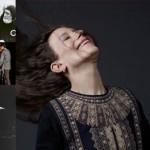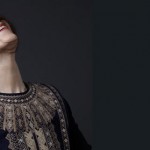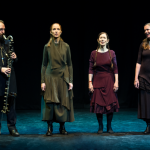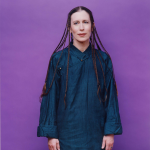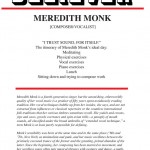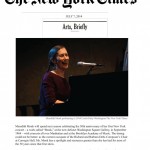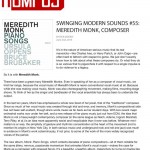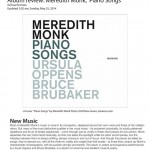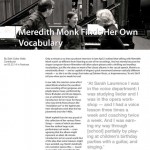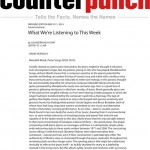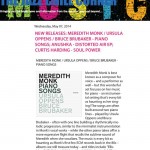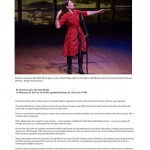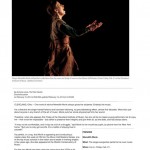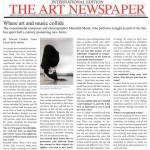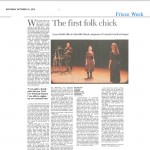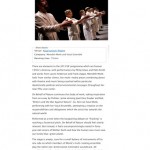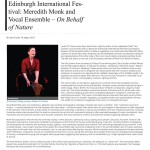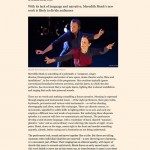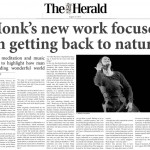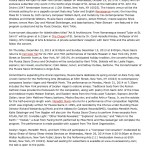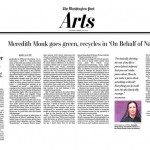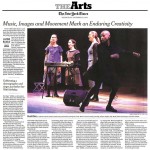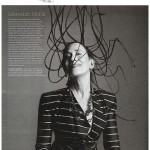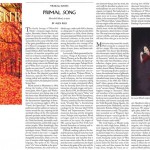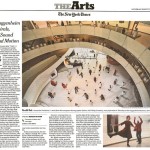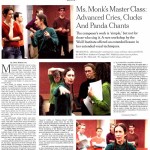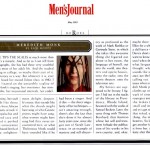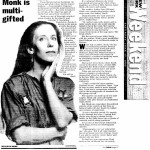Meredith Monk
Thirty years ago, when we first began working with Meredith Monk and needed to come to the fifth floor of her loft on West Broadway, we typically called her from a street phone to say we were downstairs. She would then open the window and throw a sock with a key to the front door. As the years progressed, a downstairs bell was installed. You pushed it, she responded, and the door opened. But oh! The long five flights of stairs. Times changed. An elevator was being installed. Such is the story of the gentrification of Tribeca, and parallel to it, the story of Meredith’s amazing evolution from a radical interdisciplinary artist (before such terms existed) into the winner of the 2012 Composer of the Year Award from Musical America. One of the great thrills of my job are the unexpected, spontaneous performances, like the time Meredith began singing “Green Sleeves” during a phone conversation concerning her then-new CD, “Beginnings.”
I met Meredith Monk in 1970, the first summer I worked at the American Dance Festival. One afternoon, a few days before she was about to present the world premiere of “Needlebrain Lloyd and the Systems Kid,” she appeared in my office. The proof sheets for a program book was in her hand; a scowl was on her face. “It needs to say that the House Foundation is presenting the production,” she declared. “Let me speak to Charlie Reinhart,” I responded picking up the phone. On the other end, Charlie insisted that the Festival be credited with presenting the production. I passed the phone to Meredith. “No,” Meredith insisted. Charlie delivered an ultimatum: “The program will either credit the Festival as presenter, or the premiere will be canceled.” “If the House Foundation isn’t credited, we won’t perform,” Meredith countered, turned on her heels and left. Charlie demanded I find her. I took a breath and headed up to the college cafeteria where she was meeting with her performers. There I faced her entire troupe seated at a long table, each in varying stages of long hair, staring at me. I felt as if I was crashing the Last Supper. The show did go on (forty years later, Charlie and Meredith continue to love each other). The production included horses flying across a field at 10am, row boats lit with lanterns bobbing on the campus pond at sunset, an army of motorcycles roaring up the path, their headlights gleaming in the dark, strange figures silhouetted against dorm windows with others stirring kettles on the grass below. Where other artists created objects to suggest reality, Meredith used real life objects to create fiction. “Needlebrain” was one of the great miracles of the summer, and one of Meredith’s many acts of genius.
We’ve handled her shows of all sizes – from ones in her West Broadway loft to her performances at the Brooklyn Academy of Music’s 2,200-seat Opera House. Nothing is too small or too big for her to take on. In her hands, the big can become intimate, and the small, huge in its resonance. No art form is considered foreign territory for her. Her productions, which often combine music, dance, theater, film, madden writers, editors and critics who spend careers trying to categorize her. And now she’s outsmarted the naysayers by amassing awards in every category and creating an entire generation of artists whose work also eludes definition. Still she confounds while continuing to cast spells, including over me.
PRESS KIT
Country: USA
Years: 1992, 1993, 1994, 1995, 1996, 1997, 1998, 1999, 2000, 2001, 2002, 2003, 2004, 2005, 2006, 2007, 2008, 2009, 2010, 2011, 2012, 2013, 2014
Art form: Music
